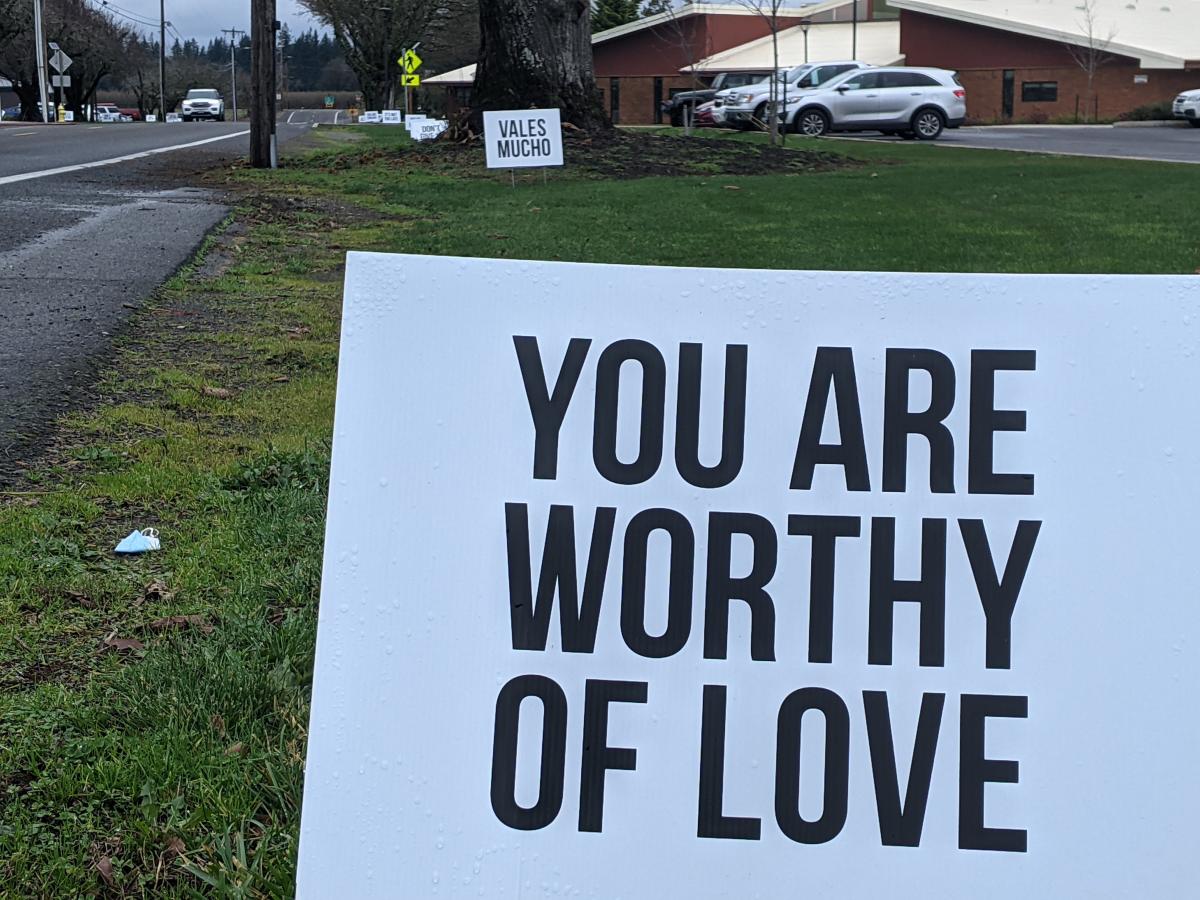District Office
20256 Grim Road NE
Aurora, Oregon 97002
Phone number: (503) 678‑7100
20256 Grim Road NE
Aurora, OR 97002
Phone: (503) 678-7100
Fax: (503) 386-4659

By Jillian Daley
There were several student suicides in North Marion and neighboring areas in the early weeks of 2019, prompting the community to pull together to grieve and to consider how to support students in creative ways in the coming years, North Marion School District PTO President Sara Hughes explains.
The problem isn’t going away. Suicide is the leading cause of death among Oregonians ages 10 to 24, according to the 2020 Oregon Student Health survey. In fact, it’s happened before and occurred again more recently in North Marion alone.
Yet the PTO isn’t giving up either. One of the ways the group chooses to support people who are suffering, including our youths, is to pitch a long line of inspiring signs along either side of Grim Road where it bisects the North Marion campus (and also along Boones Ferry Road by the High School). They do it every year in the gray months of winter, and the long lines of signs appeared again this past month.
“The PTO talked about it, and we wanted it to be a big bang, not just one here or there,” Hughes explains.
For the PTO, the idea caught fire in 2019, and now the signs typically debut in November and vanish in February, replaced with Valentine’s Day flair. The reason the signs were available in the first place is because Newberg resident Amy Wolff and her family noticed a spike in suicides in 2017.
The Wolffs decided to station several hopeful messages in neighbors’ yards, and with every “you matter” or “don’t give up” sign that the Wolff family planted, their business grew. Now the signs are everywhere, and for good reason. There’s a need for them. The PTO and the Wolff family noticed a trend so prominent that it appeared in a professional medical journal.
The Journal of the American Medical Association released a study in 2019 that stated that suicide among people in their teens and young 20s reached an 18-year high in 2017. The rate is still on the rise. In Oregon, the suicide rate rose from 19.8 to 21.2 per 100,000 people from 2018 to 2019, according to America’s Health Rankings.
The extent of the problem leaves locals undaunted. The signs have been posted in January 2019 and in the month of November that same year and in 2020 and 2021. During the pandemic when school went fully online, Hughes says that the PTO simply installed the inspiration off campus, such as in Aurora, outside of the White Rabbit Bakery on Highway 99.
In fact, even when the signs are at rest, they are showing off the best part of humanity, with Oregon RV and Storage loaning the PTO a storage unit to stow them.
“They’ve been donating our storage space for over a year, and they’re super nice and easy to get into, and they’re clean,” Hughes says.
Now that school is back in session, the PTO has once more pitched the signs in the campus grass. This year, Hughes enlisted the help of North Marion parent Tasha Arano, who recruited her husband Roberto Arano. Together, they lined Grim Road with cheer this past Sunday, Nov. 28. Tasha Arano says the signs carry great meaning, especially during the grim holiday season.
“They’re encouraging to people and brighten people’s days,” she says. “That’s what the hope is.”
If you need mental health support or know someone who does, find resources on the North Marion School District website. Also, know that you can call the National Suicide Prevention Lifeline run by Lines For Life at 800-273-8255 (en español: 888-628-9454) or text "273TALK" to 839863. For teletypewriter or TTY, call 800-799-4TTY (4889).Youthline is a teen-to-teen crisis and help line; teens are available to help from 4 to 10 p.m. daily, and Lines for Life will answer off-hour calls. Call 877-968-8491 or text teen2teen to 839863 or chat at http://www.oregonyouthline.org.